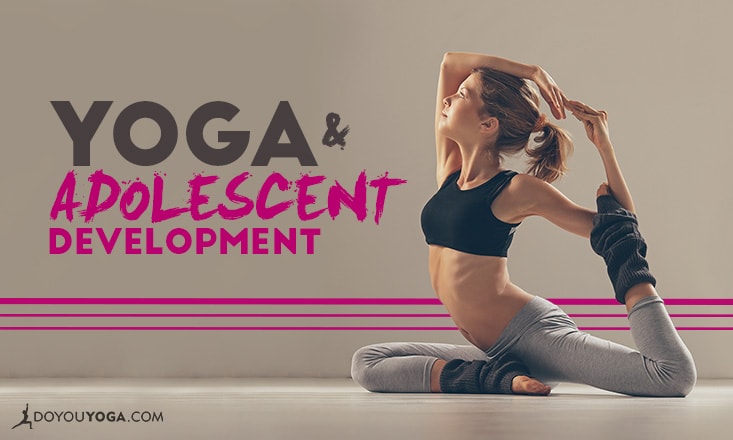We all know that yoga is great for all sorts of different things, from easing aches and pains, to connecting with yourself.
But can it help teens deal with the struggle of being teenagers? Of course it can! Here are five reasons yoga is an essential part of healthy adolescent development. Spread the love of yoga to a teen in your life.
1. Combats Body Shaming in Social Media
In the rapidly changing media landscape, teenage girls are constantly being challenged to develop a healthy self image.
With unrealistic images of scantily clad pop idols, models and social media famous fitness freaks bombarding platforms such as Facebook and Instagram, not to mention the narcissistic culture that promotes girls to post highly edited images of themselves, it’s no wonder that teenage girls feel pressure to conform to the “Hollywood body”.
Of course this is nothing new, but its undoubtedly worsened by the advent of social media that permeates teen culture on a daily basis, with girls basing their self worth on the number of “likes” their post might receive.
Ubiquitous smart phones continuously expose girls to these images, thus it can be challenging to break away and connect with reality, especially when the culture is so ingrained. The negative repercussions of this media culture not only create unrealistic expectations and often unattainable “goals,” but also encourage girls to focus on more superficial values.
2. Yoga Cultivates a Positive Relationship to the Body
It is especially important for girls to invest their energy in developing a positive relationship with their bodies. By incorporating yoga into the core curriculum of physical education for teens, we can help to foster a healthy body, mind, and spirit awareness and shift the focus onto bigger ideas that will better prepare girls for a rewarding life.
While physical education and health education are compulsory in most schools, incorporating optional daily yoga practice — even just 10 minutes a day of mindfulness — would help teens to develop an integrated body, mind, and spirit health awareness.
3. Yoga Provides a Physical and Mental Stress Release
Growing up and experiencing the hormonal changes of adolescence is confusing and challenging. With competitive culture, pressure to conform, and chemical and physical changes, as well as the pressures of school work and extra curricular commitments, its no wonder there has been an increase in diagnosis of anxiety and depression in teens.
We should be cultivating more mindfulness and acceptance through yoga classes. A physically rewarding asana practice can help to relieve pent-up energy or invigorate teens who have low energy.
It can also teach teens to develop healthy stress coping mechanisms and improve concentration techniques to increase academic success.
4. Yoga Can Combat Bullying
Not only is yoga an excellent tool for promoting positive body image, but it’s also a great way to promote acceptance of others and reduce bullying. Teenage girls in particular are prone to exclusive and gossip-y bullying behavior, usually based on fear and a need to be accepted by others.
By opening discussions themed around more ethical behavior, girls can be guided towards positive social interactions in a way that allows them to make decisions for themselves based on a core belief framework, rather than dealing with the problems when they arise (after all, prevention is better than the cure).
In yoga, we can teach girls about compassion and how at the core we are all equal.
5. Yoga Helps in Recovery from Mental Illness
Awareness about detection and treatment of mental illness among adolescents is progressing and yoga is a fantastic tool that can be integrated into the management of disorders such as anxiety, depression, and eating disorders.
As a teenager, I was diagnosed with bipolar disorder, and using exercise as a wellness strategy was one of the key tools I used on my road to a successful recovery. If yoga had been prescribed to me in the early stages of my first depressive episode, I may have had some understanding of the bigger picture, and found it easier to accept my diagnosis.
Success in integrating yoga with the treatment of inpatients in mental health rehabilitation facilities has been documented with great success, thus it seems logical that yoga should also be offered in adolescent mental health centers as well.
A Final Note on Teen Yoga
It is important to keep in mind that while teenagers may be physically capable of the asanas, and possibly even stronger in some poses, yoga classes for teens need to be taught in a different way to optimize engagement.
For example, a yoga teacher should be able to teach in a relaxed, easy going way, with a good sense of humor.
To keep teens engaged, a fast paced flow class with some challenging asanas and inversions is ideal. Most importantly, a substantial Savasana to allow teens enough time to rest and focus is key to a successful lesson.
In my personal experience, as head of the Yoga Program at YMCA summer camp, teens also respond well to partner work and when given some responsibility to assist in teaching as this fosters independence and building positive relationships with each other.
How do you help teens in their yoga practice? Share with us below!


